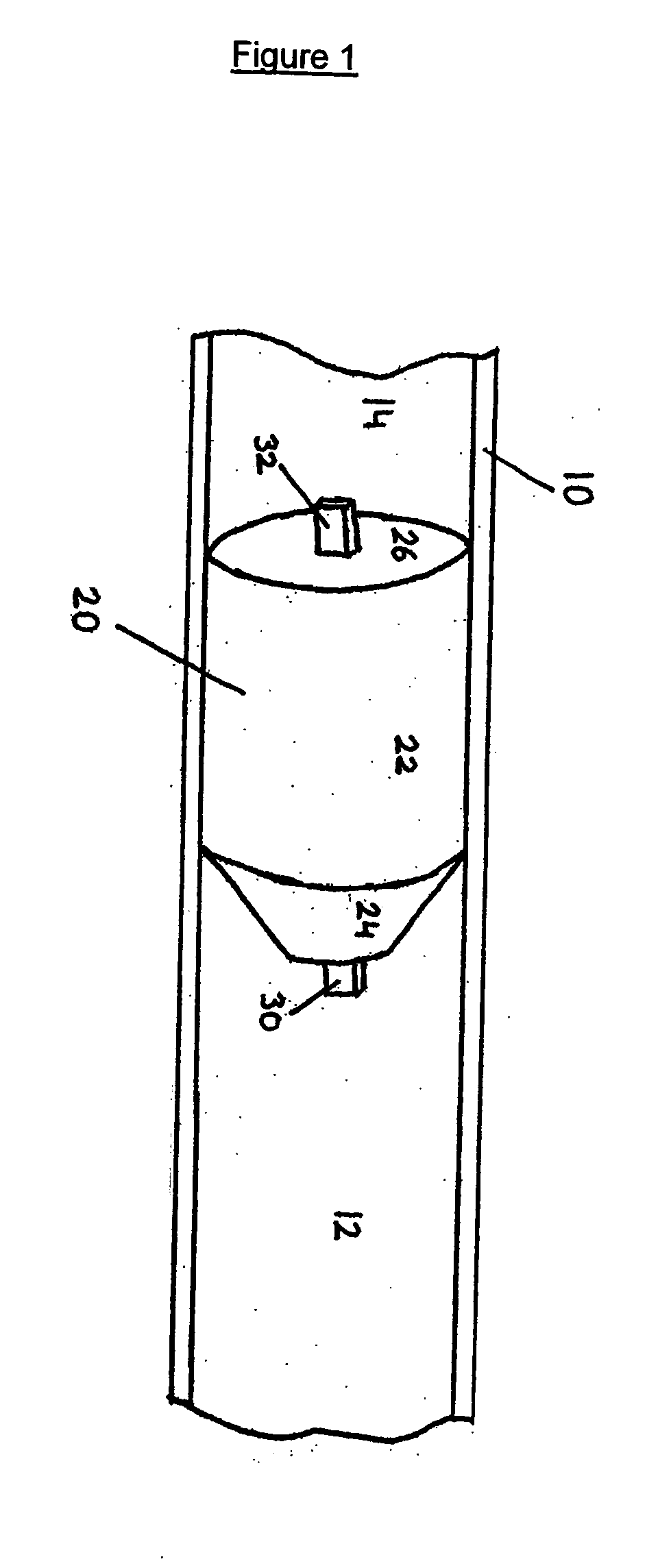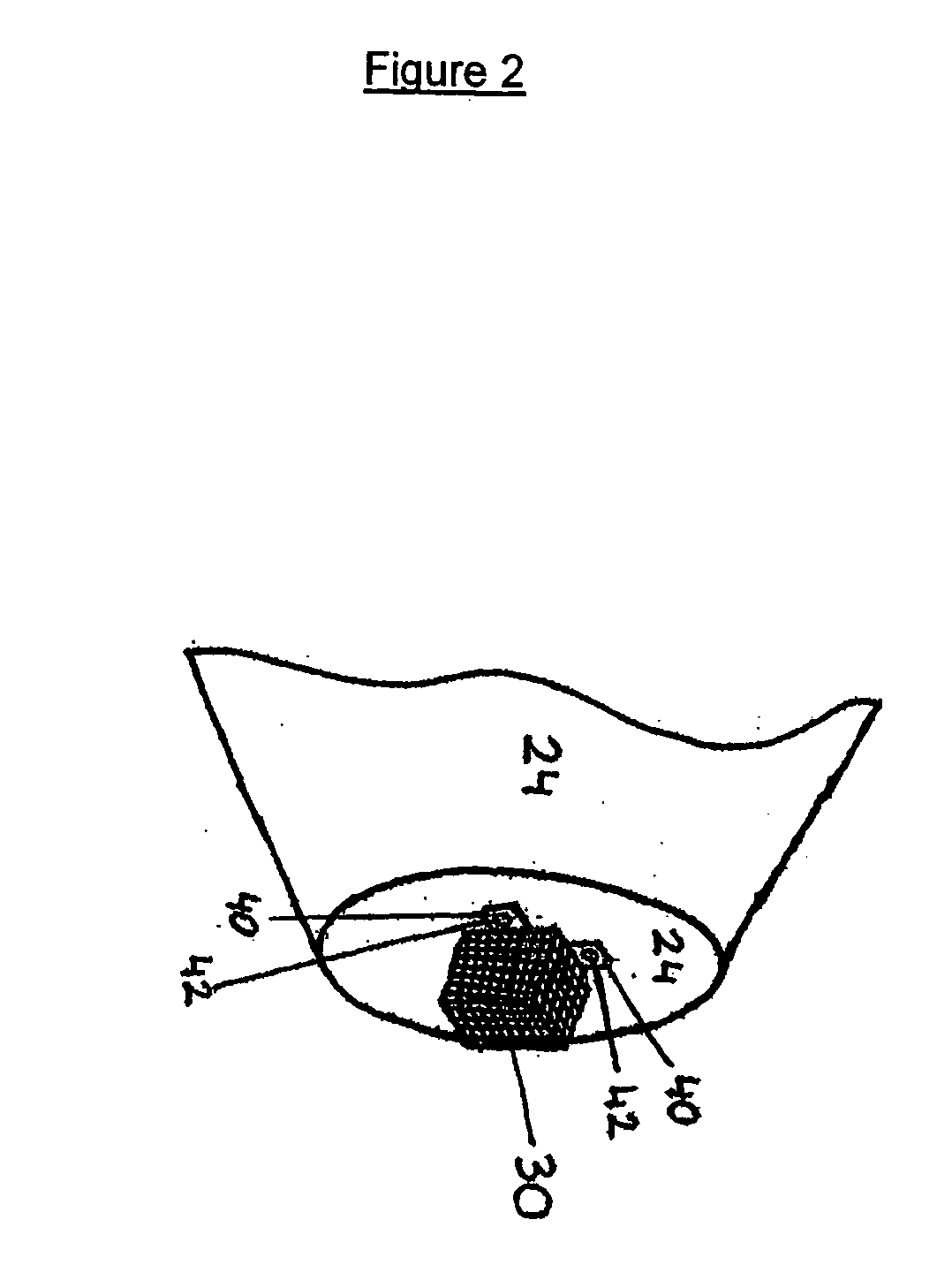Method and apparatus for detecting the presence or absence of fluids in a pipeline
- Summary
- Abstract
- Description
- Claims
- Application Information
AI Technical Summary
Benefits of technology
Problems solved by technology
Method used
Image
Examples
example
[0043] A detecting pig was used to sweep a transparent pipeline with water present in the pipeline. The pipeline had a length of 50 feet and an inner diameter of 4 inches. A Polly Pig foam sweeping pig, commercially available from Knapp Polly Pig, Inc. was used as a body element. The body element was bullet shaped. The body element was fitted with two plastic straps, one secured to its upstream surface and one secured to its downstream surface.
[0044] A sweep without any detecting substance was performed resulting in a portion of the water being removed from the pipeline. However, observation of the transparent pipeline revealed that water was still present in the pipeline. A cube of sugar was secured in each of the two straps on the pig and another sweep was performed. Examination of the recovered pig revealed that both cubes of sugar were substantially dissolved. These results indicated that water was still present in the pipeline. Observation of the transparent pipeline confirmed...
PUM
 Login to View More
Login to View More Abstract
Description
Claims
Application Information
 Login to View More
Login to View More - R&D
- Intellectual Property
- Life Sciences
- Materials
- Tech Scout
- Unparalleled Data Quality
- Higher Quality Content
- 60% Fewer Hallucinations
Browse by: Latest US Patents, China's latest patents, Technical Efficacy Thesaurus, Application Domain, Technology Topic, Popular Technical Reports.
© 2025 PatSnap. All rights reserved.Legal|Privacy policy|Modern Slavery Act Transparency Statement|Sitemap|About US| Contact US: help@patsnap.com



